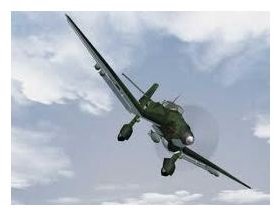History of the Luftwaffe: WWII Aces
The Luftwaffe: WWII - Beginnings to Poland
Under the treaty of Versailles, the Luftwaffe was limited to a few aircraft and no heavy bombers. One of the first steps taken as part of the National Socialist rearmament project in the 1930s was to create a covert, and eventually overt, air force capable of dominating European skies. Thus was born that eras’ Luftwaffe. WWII saw this force field warplanes that achieved epic status such as the Messerschmitt 109 and the Junkers 87 Stuka.
The invasion of Poland in September 1939 opened with Luftwaffe strikes on the town of Wielun. The JU-87, DO-17, and HE-111 bombers of the Luftwaffe provided close air support to the army - one of the primary functions of the Luftwaffe. The Polish air force fought back, but were at a disadvantage due to Germany’s modern tactics and more advanced technology. WWII began with this invasion of Poland, and guaranteed that the Luftwaffe would fight many battles to come.
The WWII Luftwaffe Fights France and Britain
By the invasion of France in 1940 the Luftwaffe WWII reputation had already been established. The pilots of the Luftwaffe were now ready to take on their next opponents: France and Britain.
The air war over France was quick and violent. Air strikes and desperate dogfights were fought over sectors of the battlefield where the German High Command (OKW) hoped the French would divert resources away from the main thrust of the ground attack, leaving the Ardennes sector vulnerable. The gambit was a success, and the now legendary “Sickle Cut” brought Guderian’s panzers to the English Channel.
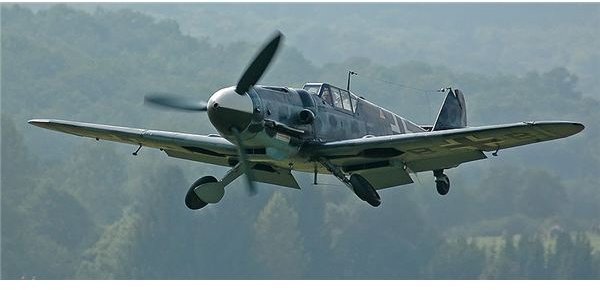
Though large, much of the French air force was dispersed, and the ferocity of the onslaught demoralized French resistance. The British kept their best new fighters, the Spitfires, on home turf, and the Allied forces in France were largely outmatched. The skies over Dunkirk, however, brought the first major check to the Luftwaffe. WWII aerial combat is largely defined in the public memory by the match between the Luftwaffe and RAF and the ME-109 and Spitfire, and the battle over Dunkirk was the first time these legendary aircraft fought in large numbers.
Luftwaffe WWII Defining Moment - The Battle of Britain
When Churchill made the comment that “never had so many owed so much to so few” he was referring to the fact that a few thousand individuals in Spitfire and Hurricane fighters managed, though barely, to stop the bid for air superiority over Britain and the Channel waged by the Luftwaffe. WWII experts probably tend to over-emphasize the real danger posed to Britain proper by Germany (Hitler at this time actually hoped to make peace with Britain) but nevertheless Britain’s survival in the Battle of Britain gave the allies their first concrete victory of WWII.
This campaign has become a defining moment in popular culture, although it was a near thing resulting in British victory primarily because Goering, Luftwaffe WWII head, kept shifting strategies and the British successfully goaded the Germans into targeting London in revenge for British bombings of Berlin.
The Luftwaffe: WWII on the Eastern Front and Defending the Reich
Hitler’s decision to launch Operation Barbarossa was perhaps the greatest military blunder of all time. Caught up in the success in defeating France, Hitler became a legend in his own mind, and failed to consider the consequences of war with the Soviet Union. Thus did the dictator sow the seeds of his own demise, and that of the Luftwaffe.
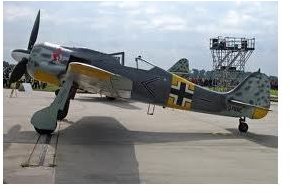
WWII quickly turned into a vicious stalemate along thousands of miles of front in the east, with some side action serving to divert precious German resources to combat the British and later Americans in the west. But the majority of the war of the Luftwaffe WWII action was seen in the east, where the force fought the slow defeat after the failure of the German army to take Moscow and the disaster at Stalingrad, where the Luftwaffe was prevented from resupplying the German 6th Army.
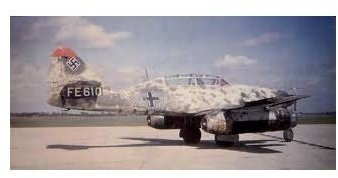
As the Soviets pressed onwards towards Berlin and the Allies landed in Normandy and bombed German cities, the Luftwaffe shifted focus to the strategic defense, relying on numbers and technology to stave off inevitable defeat. By 1945, at the war’s conclusion, the Luftwaffe was beaten - but it had made its mark on history.
The Luftwaffe Aces of the Air: Galland to Hartmann
The aces of the Luftwaffe in WWII who most immediately capture the imagination are those who scored hundreds of victories in aerial combat.
-
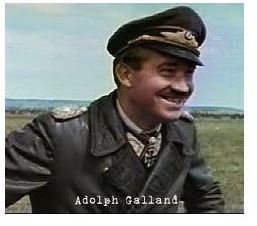
-
Major Erich Hartmann stands as the highest scoring fighter ace of all time. He became preeminent among Luftwaffe aces although he did not score his first victory until November 1942. He then proceeded to rack up 352 victories in total, all but 2 on the Eastern Front. He was shot down numerous times, and captured in 1943 - he feigned injury and managed to escape back across German lines. After the war he was handed over to the Soviets and spent 10 years in prison before returning home to Germany.
-
Generalleutnant Adolf Galland was the General of Fighters during much of the war, and though he wasn’t the highest scoring of the Luftwaffe aces overall, his 104 victories on the Western Front ranked 4th on that front alone and first when battle over the English Channel is considered separately, and he was the third best of the Luftwaffe aces of the Battle of France with 14 victories as well as the second ranked Luftwaffe ace of the Battle of Britain with 35 victories. He later made some of the earliest flights in the Messerschmitt 262, the first mass produced fighter aircraft.
Other Luftwaffe aces of the sky include:
- Major Gerhard Barkhorn, 301 Eastern Front victories
- Hauptmann Hans-Joachim Marseille, top Western Front Luftwaffe ace with 158 victories
- Major George-Peter Eder, most victories against the USAAF (56)
- Oberst Josef Priller - most Spitfires downed (68)
- Oberleutnant Kurt Welter, top jet ace (25-29 confirmed victories)
- Oberleutnant Otto Kittel, top of the Luftwaffe aces versus the IL2 (94)
Top Luftwaffe Aces for Close Air Support
Although dogfights dominate the imagination of most readers of history, what with the stereotypical focus on the reputed chivalry and emphasis on skill that has dominated the narrative since the Red Baron in WWI, wars are not won in the air - they are won on the ground. And it is in close air support that Luftwaffe aces shone brighter than those of every air force with the possible exception of the Soviet Union, whose IL2 Sturmovik pilots were legends of the battlefield.
-

Oberst Hans-Ulrich Rudel is far and away the top pilot amongst these Luftwaffe aces. He accumulated a total of at least 519 confirmed tank kills in his Luftwaffe career in addition to downing nine aircraft while he was at it. He was the most decorated German service member in WWII, and even partially destroyed a Soviet battleship in conjunction with another Stuka. Shot down dozens of times Rudel even went back into combat after losing his leg towards the end of the war. His input was even sought when the US Air Force was designing the A-10 Thunderbolt II tank busting strike aircraft. A devotee to Nazism and an admirer of Hitler, Rudel died in 1982.
-
Oberfeldwebel Anton Hubsch was the second highest scoring of the air support focused Luftwaffe aces with at least 120 tanks destroyed and 8 aircraft.
-
Hauptmann Gerhard Studemann - Third top ranked of the Luftwaffe aces with 117 tanks destroyed.
Luftwaffe WWII Aces: Forced to Achieve
A moment must be taken to address why Luftwaffe aces of World War Two achieved so much. After all, the best US fighter aces scored fewer than fifty victories, and the best Soviet ace over 100. German pilots were not inordinately better trained or equipped, so why the totals?
The best answer is likely that German pilots had to fly until they were killed or incapacitated. In addition, unlike many Allied pilots who flew one mission per day, German operations were focused on close air support and dominance of the skies over the battlefield. They often flew 2-3 sorties per day and on the Eastern Front against often poorly trained Soviet pilots. These Luftwaffe aces’ accomplishment is as much a result of simply surviving as in raw skill.
But their contribution to the German war effort and ability to survive in the hellish world of aerial combat sets them apart, and they deserve to be remembered.
References:
Aces of the Luftwaffe: https://www.luftwaffe.cz/index.html
Acepilots.com: German Luftwaffe Aces: https://www.acepilots.com/german/ger_aces.html
References
- Acepilots.com: German Luftwaffe Aces: http://www.acepilots.com/german/ger_aces.html
- The History of Tanks and People of the Panzertruppe during World War II: http://www.achtungpanzer.com/invasion-of-poland-fall-weiss.htm
- The Invasion of Poland: http://www.multilingualarchive.com/ma/enwiki/en/Invasion_of_Poland_%281939%29/11
- Aces of the Luftwaffe: http://www.luftwaffe.cz/index.html
- Poland in Exile: http://www.polandinexile.com/airforce01.htm
